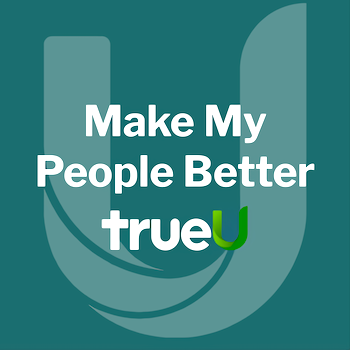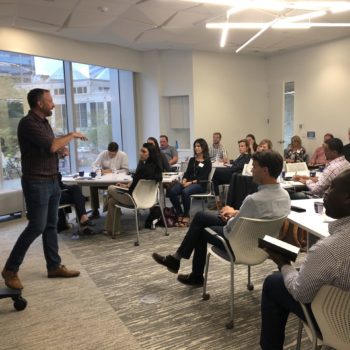“Design can help to improve our lives in the present. Design thinking can help us chart a path into the future.”
–Tim Brown, Change by Design: How Design Thinking Transforms Organizations and Inspires Innovation
We all experience the constraint of time in our lives. With limited time, how do we make the most of our time in both our personal and professional lives?
The design thinking methodology has proven to be valuable in tackling all kinds of challenges. Even when the full framework isn’t relevant, incorporating design thinking principles and activities into everyday situations can make the results more successful – whether those are a meaningful interaction with a family member or a thorough requirements gathering session.
Incorporating design thinking principles into our daily activities can ensure time is used in a valuable manner. Consider it your daily dose of design thinking.
Your daily dose of design thinking is about utilizing the design thinking framework and principles to facilitate everyday interactions with your team, family, friends, and maybe even someone you just met. Here, we share three applications of design thinking for you to incorporate into your everyday.
Design Thinking as a Way of Life
The best place to get started is with empathy (the first step in the design thinking methodology). As humans, we wake up and embrace each day hoping to contribute in some way and make a difference. Throughout the day, when you are in a meeting, chatting with a friend, or working with a customer, the easiest way to focus and be present is to empathize.
Get started with some simple questions that you can answer in your mind, particularly in situations where issues may arise:
- How do I put myself in their shoes?
- What are they trying to tell me?
- How does this issue make them feel?
- Who does this issue really affect?
- How does this issue affect them?
Empathizing with individuals brings focus to the issue and makes you more engaged with the outcome they desire. When you listen to relate and understand, you bring more value to daily interactions. Empathy can be applied to every interaction you have.
The key to empathy is to remember this simple fact: it’s not about you.
Empathy Exercise:
Practice this empathy exercise with one of your coworkers, family members, or friends.
Step 1: Partner up with a coworker, family member, or friend.
Step 2: Select one person to be the interviewer and one to be the interviewee.
Step 3: Pick a challenge (personal, work, other) and have a conversation around it for three minutes.
Step 4: Stop. Now switch roles.
Step 5: Discuss what you learned.
As you wrap up the exercise, here are some tips and distinctions:
- Be sure to coach, not solution. Your job is not to solve the problem, simply listen. People tend to jump quickly to solutioning – it’s human nature to want to fix things. When you do this, you miss the emotion and could miss the real problem the person is trying to share.
- The why is more important than the what: emotions matter.
“There is nothing more frustrating than coming up with the right answer to the wrong question.” – Tim Brown, Change by Design: How Design Thinking Transforms Organizations and Inspires Innovation
Are You Solving the Right Problems?
Next, let’s walk through how to frame a problem. You empathized with people and understand their issues and concerns.
How do you know what the right problem is? Insert the design thinking principle of framing a problem. There are a few ways you can work this principle into meetings and projects. Problem-framing methods are quick and easy and establish a framework for progress and understanding.
Problem-Framing Exercise:
Use these sentence structures to help frame a problem.
How might we…. so that …. for ….
How might we… for … so they can….
Discuss who you are trying to help to understand how to fulfill their need.
An example for a university might be: How might we remove registration complexity so that we can enrich learning for students?
Design thinking is all about focusing on people and needs. There are great online resources you can leverage to understand and empathize, including this empathy and problem statement template that’s great for problem definition.
The Saying “It Takes a Village” is True at Work, Too
No two people have the exact same life experiences. We all have different teachers, friends, work lives, pains, and joys we experience that makes us vulnerable. We each have our own journey that shapes us into who we are, how we relate, and how we interact in our work environments. Being unique is good.
The strongest teams are made up of diverse views and individuals.
Diversity Exercise
There are methods to tap into diversity in your meetings. If your team needs an intro before diving in, there are several activities you can use to break the ice.
Try the “yes and…” round-robin exercise. This can be done in a big circle or with partners.
For example, share your favorite aspects of thanksgiving by repeating what the person said before you, then adding “yes and….” People’s responses can be whatever pops in their mind that hasn’t been said before. In a big group, the topic often changes, and that’s okay!
“Pumpkin pie – yes and… gravy – gravy, yes and…”
This type of exercise helps people to get out of their heads and start thinking creatively. It’s a great way to engage people and develop an understanding of each other. More important, it helps people become present and ready to start innovating.
Need some other ideas? Here is a great list: Stokes for Design Thinking, some exercises to get the team going.
Conclusion
Applying the principles of design thinking to your everyday life is possible. Be sure to remember: start with people, gain understanding, and get clarity on needs. From this foundation, you can have fun, engage, and see the value in the team.
Your daily dose of design thinking awaits. What exercise will you try first?
Share:







